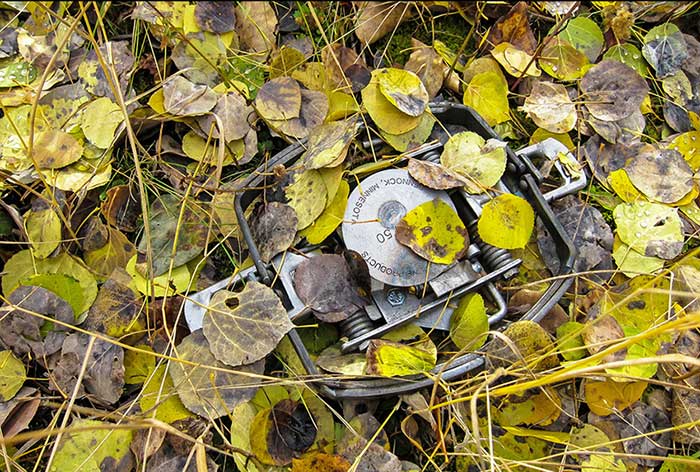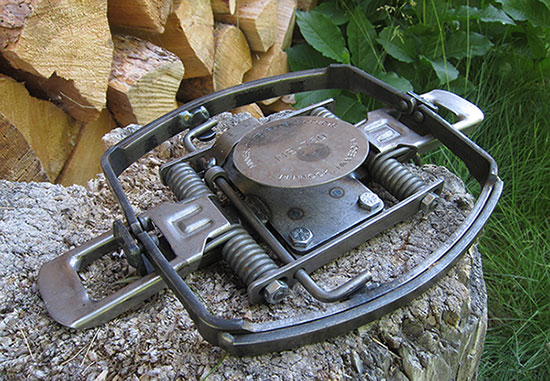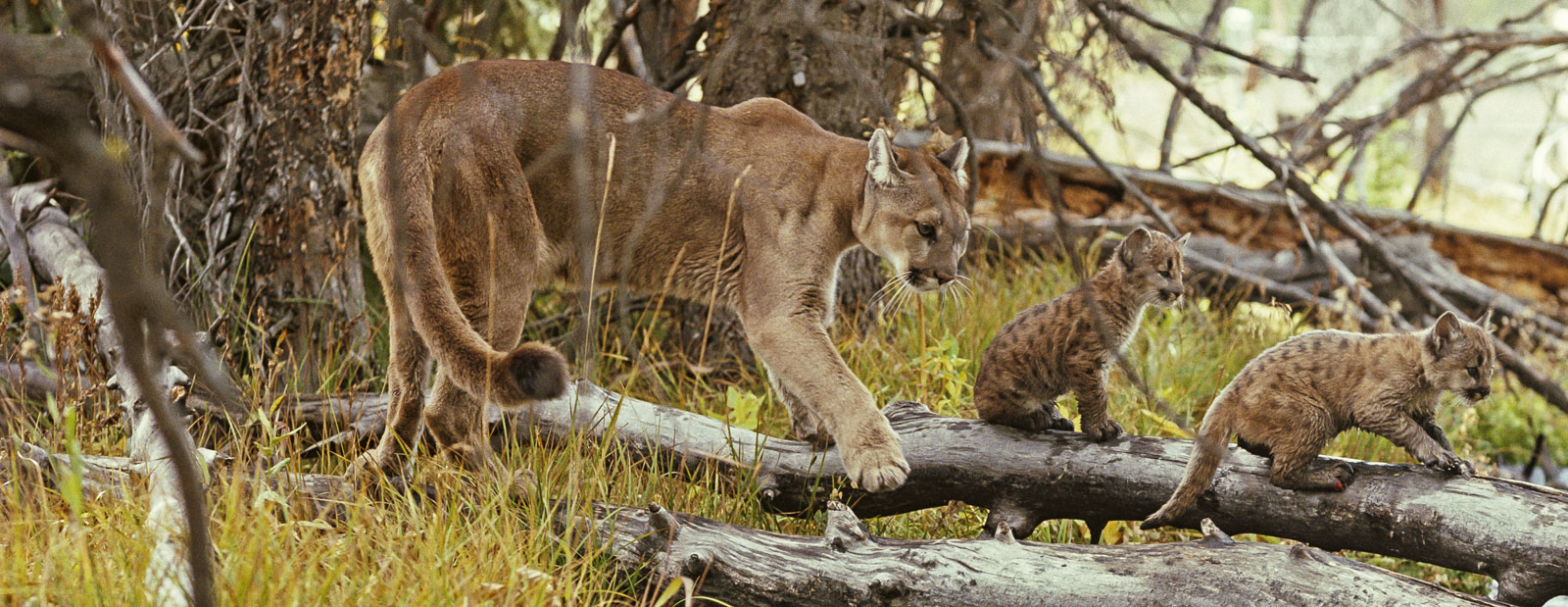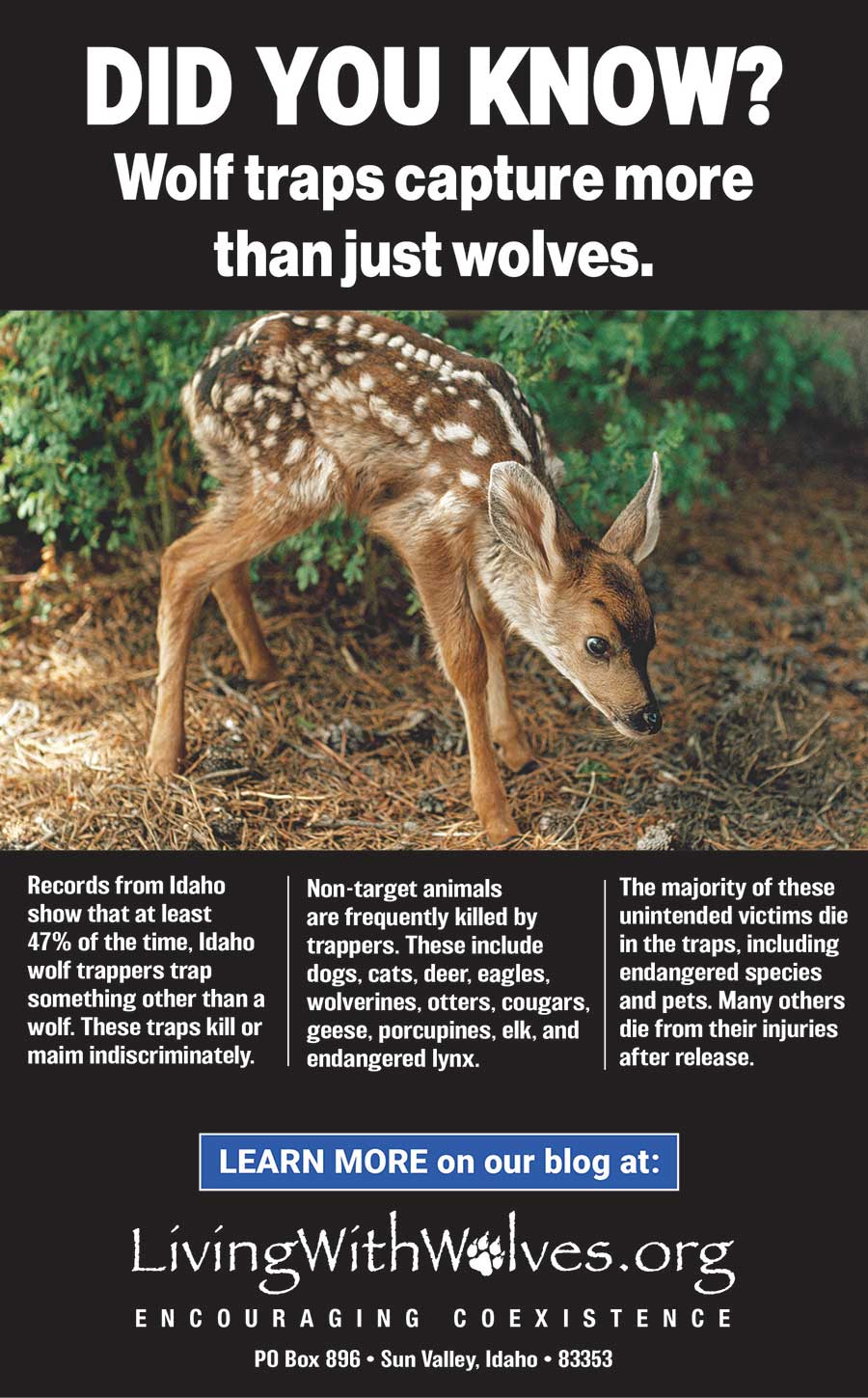Traps are Indiscriminate
For many thousands of years, people have been trapping animals. Originally, animals were trapped as a matter of survival for the trapper, providing food and fur for clothing and blankets. Most of the world no longer has a survival-based need for trapping. People have access to other, more humane sources of food and clothing. Though demand in many cultures has diminished, trapping still persists and fur is still used by the fashion industry. But, more than ever before, trapping in the 21st century is an issue of ethics and morality, as the need has all but disappeared, while the reality of its cruelty is exposed.
Trapping is an alarmingly imprecise practice. It fails to meet the standards established and upheld for the other ways in which the public utilizes wildlife and other natural resources. For example, it is illegal and considered a form of poaching to hunt a non-target species. Hunters are only permitted to kill the animal they are targeting and for which they have bought a tag. Violators are held accountable. Yet trappers are not held to the same standard as hunters. The frequent killing of non-target animals, to this day, remains an acceptable norm wherever trapping is still permitted.
Although traps are set to target a particular animal, any unsuspecting animal may be caught. In Idaho alone, Department of Fish and Game records indicate that nearly half of the time Idaho wolf trappers catch an animal other than a wolf. This is precisely what is meant when people say that traps and snares are indiscriminate. Traps and snares are typically baited with strong-smelling scents that attract all types of animals. There is no way to ensure that only one type of animal is caught. Endangered species, pets and other animals that are not supposed to be trapped can and do fall victim to this antiquated practice.
We are most likely to hear about pet dogs caught in traps. Deaths are not uncommon, and gruesome injuries are not unusual. The list extends beyond dogs to include our pet cats, and just about every wild mammal imaginable, but also birds, including eagles and geese, and any number of endangered species. It is a federal offense to kill an endangered species, but there is usually no consequence when trappers inadvertently kill endangered species with their non-discriminating traps.

What Traps and Snares Do
Some traps and snares are intended to restrain the animal until the trapper returns to the site to “dispatch” the animal. Euphemisms are employed to disguise the harsh reality of what occurs. Animals are often trapped so that their fur can be made into apparel. Bullet holes and bloodstains lessen the value of the pelt, so trappers often use methods other than a gun when they return to kill the trapped animal if it is still alive. After enduring pain, panic and exposure to the elements, the trapped animal will be killed by the trapper with a blow to the head using a club, by crushing the chest cavity, or by strangulation.
Other traps and snares are intended to kill the animal quickly, but instead frequently result in either a slow death or grisly and debilitating injuries that eventually prove to be fatal. Snares are essentially hair-trigger wire lassos set at neck height. They tighten as the animal struggles, cutting off blood flow to the brain. For this type of snare, the idea is that death comes quickly. However, that is often not the case. The animal caught in the snare may be of a different size or height than the target animal. The snare may tighten around their limbs or abdomen, digging into flesh and cutting off blood flow to other parts of their bodies, but not necessarily killing them. One study found that fewer than 50% of canids caught in killing snares lost consciousness within five minutes (a timeframe arbitrarily determined to be humane), while some lived for hours or days before dying.
Languishing for Days
There is simply no justifiable reason to leave an animal to languish for days in a trap or snare. Required trap check times are not universal and vary from state to state. In Idaho, trap check times are set at 72 hours, which means a trapper is legally required to return to their traps every three days.
The height of trapping season occurs in winter, when the animals’ coats are the thickest and most valuable in the fur trade. That means a trapped animal can be exposed to freezing cold, unable to seek shelter or curl up sufficiently to stay warm, potentially for multiple nights. Additionally, the unrelenting grip of a trap can also restrict blood flow. For these reasons, frostbite is particularly likely in a limb caught in a leg-hold trap. If the animal is fortunate enough to be released, as in the case of a non-target animal, a great number of them die from the injuries they sustain from the trap itself or from exposure to the elements.
In many places, trap check times are incredibly long or non-existent. While Idaho’s three-day trap check time is among the longest, in 2018, the state proposed to extend trap check times from three days to eight days. After overwhelming outspoken opposition, the Idaho Fish and Game Commission shelved their abhorrent proposal, at least for now. Wildlife Services, the branch of the U.S. Department of Agriculture responsible for “lethal control actions” (killing animals), has no requirement for trap check time.
The late biologist, Gordon Haber, observed a female wolf over the course of nearly two weeks caught in a trap. Her mate and the rest of the pack returned to her repeatedly over that time period, and Haber could only watch, because it is illegal to tamper with a trap considered to be private property, even if an animal is suffering.
Inhumane, Cruel and Unnecessary
Conibear traps are a body-gripping trap intended to kill the animal quickly, and they are deemed a “humane” trap for this reason. However, it is often difficult to control the direction and angle from which an animal enters the trap. It may close in a way that does not kill the animal, but rather restrains and injures, while subjecting the animal to pain, the elements and potentially other predators.
Desperate to get free, animals often injure themselves further in their struggles. They break their teeth trying to bite at the trap and anchoring chain, and some will chew or wring off a limb. Although they may be free of the trap, blood loss, infection or inability to recover sufficiently from the injury are all further threats to survival. There are no accurate statistics to quantify how many animals die after freeing themselves or being released from a trap, in the event they are not the target animal.
To suggest that trapping and snaring are problematic because they frequently catch an unintended animal is certainly true. But it is equally disturbing when the targeted animal is caught in a trap or snare. Animals must endure pain and distress leading up to an equally traumatic death or potentially unrecoverable injury. Trapping proponents argue that the activity represents a long-standing tradition. In any other context, upholding a violent and deadly tradition would be an unacceptable rationale for perpetuating an undeniably inhumane practice.




